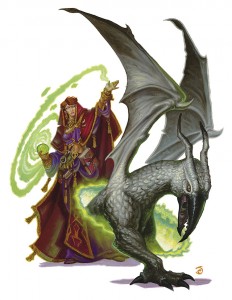 The morning began with a difficult river crossing followed by an unexpected goblin ambush in the woods. With any luck the heroes might actually reach the ruins of Castle Inverness without any other mishaps or violence. This week’s encounter began at dusk, just as the caravan spotted the ruins of Castle Inverness in the distance.
The morning began with a difficult river crossing followed by an unexpected goblin ambush in the woods. With any luck the heroes might actually reach the ruins of Castle Inverness without any other mishaps or violence. This week’s encounter began at dusk, just as the caravan spotted the ruins of Castle Inverness in the distance.
Brother Splintershield, the leader of the new community, called the caravan to a halt. He beckoned the adventurers to come forth along with Malgram and his scouts. Splintershield and his acolytes are planning to perform a ritual on the site of the castle ruins. This will consecrate the ground, protecting it from evil. But before he can begin, he wants to make sure things are safe.
Malgram and his Rangers agree to search the perimeter. Splintershield asks the PCs to check the actual ruins. They look abandoned from here, but better safe than sorry. The party, this week consisting of Belgos (the Dragonborn), Jarren, Keira, Valenae, a Battlemind and another Rogue, agreed to check it out.
 We’ve updated our LFR Treasure Bundle List. We’ve added 53 new adventures to the list bringing the total to 177. Among the new entries are 23 paragon adventures and the very first LFR epic adventure.
We’ve updated our LFR Treasure Bundle List. We’ve added 53 new adventures to the list bringing the total to 177. Among the new entries are 23 paragon adventures and the very first LFR epic adventure.

